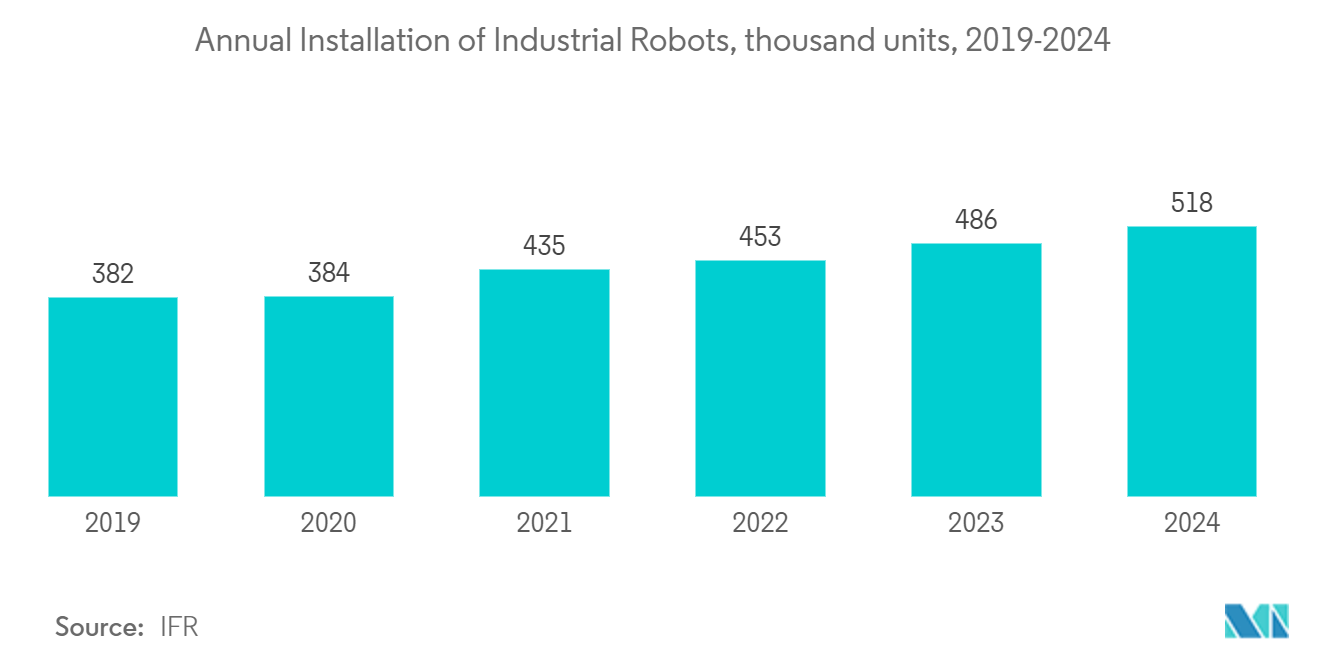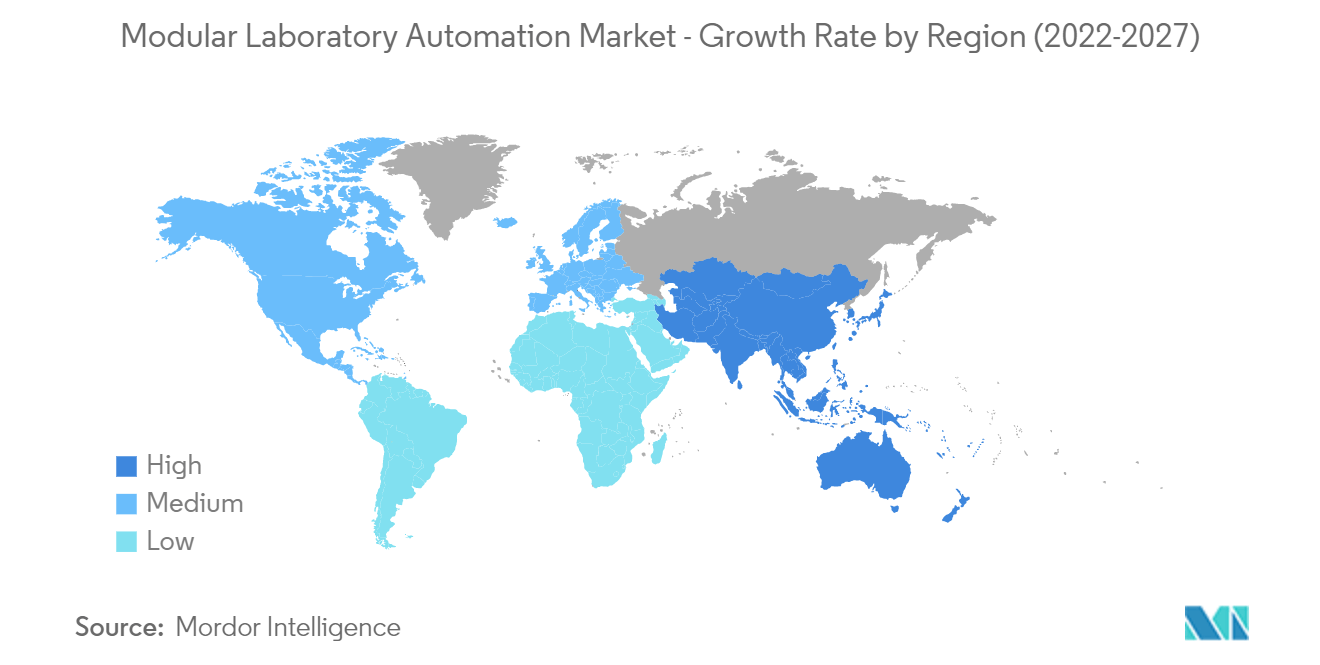Market Trends of Modular Laboratory Automation Industry
This section covers the major market trends shaping the Modular Laboratory Automation Market according to our research experts:
Automated Liquid Handlers Account for the Largest Market Share
- Liquid handlers are usually employed in biochemical and chemical laboratories. Automated liquid handling robots help in dispensing samples and other liquids in laboratories. Automated liquid handlers minimize run times and maximize accuracy. Moreover, liquid handlers are capable of operating across a wide range of volumes, extending into nanolitres, thus proving their usefulness in dispensing operations.
- Leading companies have set the benchmark for the development of automated liquid handlers and are constantly investing in developing premium products to increase productivity effectively. The evolution of the liquid handlers, capable of handling minute volumes of liquids, has contributed to the rapid development of modular lab automation systems in the market.
- According to the Robotic Industries Association, the life science sector has the third-highest growth in industrial robots, in terms of automated liquid handlers, automated plate handlers, robotic arms, and others, to meet the demand.
- According to Parker, one of the trends in life science robotics is fluidics getting simpler in robotic analyzers. This trend arose because clinical laboratories and hospitals cannot afford an instrument to go down when critical samples are involved. Certain robotic systems that used to have 50 needles on the end of a dispensing unit and lots of tubing increasingly use special valve manifolds that eliminate the need for tubing and result in less chance for failure. The manifolds basically minimize the chance of leakage.

Asia Pacific to Witness Significant Growth Rate
- The Asia-Pacific region is anticipated to witness increased demand for lab automation solutions, primarily owing to the rapid growth in the pharmaceuticals market in this region. The growth can be attributed to the increased investment in pharmaceutical research and development in Asia-Pacific.
- In the Asia-Pacific region, the prolongation of economic and demographic trends, further healthcare reforms, and the policies articulated in the government's five-year plan are expected to propel the growth of the market. The high-growth market opens new opportunities for the vendors of lab automation solutions to expand their footprint.
- For instance, China, from the pharmaceuticals industry to medical products to consumer health, remains one of the world's most attractive markets and by far the fastest-growing of all the large emerging markets. Though there has been some decline in recent times, it remains a significant market for modular lab automation in the Asia-Pacific region.
- Furthermore, the region is ideal for conducting pharmaceutical research owing to the presence of a large pool of heterogeneous population groups, unlike other continents. This region is preferred the most to outsource pharmaceutical research, owing to the availability of skilled labor and lower cost required in the development of drugs.
- Many organizations are adopting modular laboratories, offering low-cost and reliable solutions. Modular laboratory automation is experiencing a growing demand in the market. South Korea is expected to become one of the technologically advanced nations. The increasing adoption of automation and innovations in technology by local companies is expected to boost the growth of the industry.

